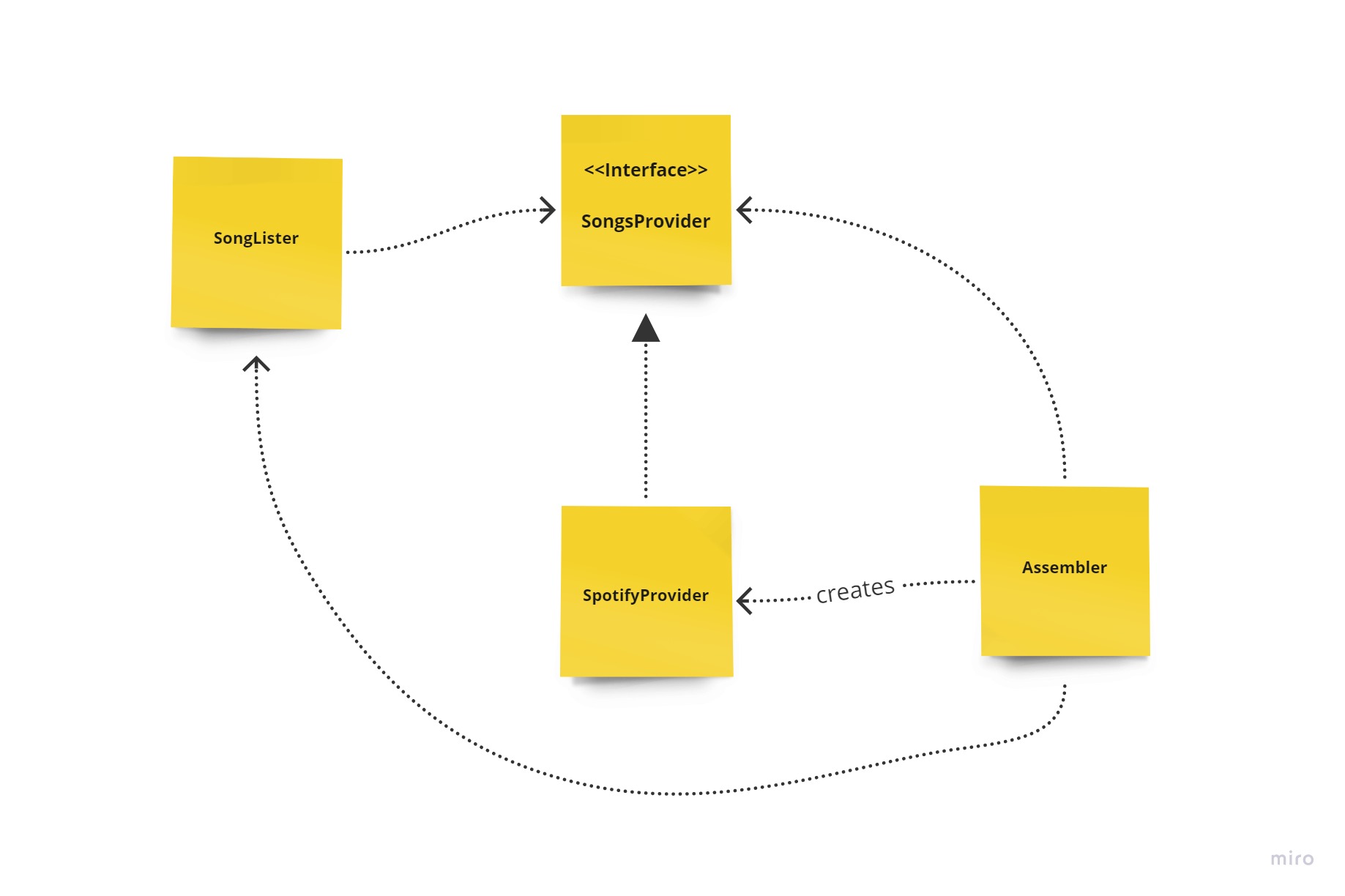Inversion of Control and Dependency Injection
Inversion of Control and Dependency Injection
I believe that many of you, like me, also learn the fastest through examples.
Let’s consider a simple example. Imagine a program that is managing songs, you can search them, read/ add details, and some interesting facts about each.
There would probably be a class that would search for those songs in some repository or asks some external providers for example.
class SongLister {
public final SpotifySongsProvider provider;
public Collection<Song> songsByArtist(String artistName){
return provider.findSongsByArtist(artistName);
}
}
But the above implementation is pretty naive. Why it’s so? We are using concrete implementation of some finder to get songs. In its current state, it’s highly coupled, and it’s not good.
I want the method songsByArtist to be completely independent of the provider. In other words, ‘WHAT’ should not be limited by ‘HOW’ we are doing something. It should be just an inner implementation detail, an abstraction.
To achieve it, I will extract the interface, which defined the proper API contract.
public interface SongsProvider {
List<Song> findSongsByArtist(String artistName);
}
Now it is maybe decoupled, thanks to the interface. But still, we need to somehow make a concrete implementation to work with SongLister class. Firstly let’s try with creating a concrete implementation in the constructor of SongLister class.
class SongLister {
private SongsProvider provider;
public SongLister() {
provider = new SpotifyProvider();
}
}
Now it is configurabish at most I would say, as now we depend on both, the concrete implementation and a SongsProvider interface.

The desired situation is where we would depend just on the interface. It’s highly possible that we would have several SongsProvider implementations which we would like to use but independent of the MovieLister class.
There are chances, that we would want to use a different source of songs, for example, we would like to take songs from some hosted file, for purpose of the local development.
We would like to have them just be dependencies/ plugins. But by direct instantiating it we are losing the possibility, to have finder as a dependency/ plugin.
What is Inversion of Control?
Inversion of Control is a principle in software engineering that transfers the control of objects or portions of a program to a container or framework. This gives a few advantages such as:
- Decoupling Between ‘WHAT’ and ‘HOW’ Something Is Achieved
- Configurable components makes application easily extendable
- Easier Testing
- Separation of Concerns
- Greater Modularity of a Program
IoC can be achieved in a few ways, so actually IoC is a concept that is implemented by mechanisms such as Strategy design pattern, Factory pattern, Service Locator pattern, and finally Dependency Injection (DI).
Dependency Injection
One of the most known implementations of IoC is based on the idea to have a separate object, an assembler, which is responsible for connecting objects with each other, or rather “injecting” them into other objects.
Dependency diagram with our songs example:

Our code should look like below. Now we are expecting a provider in a constructor, or rather a SongsProvider interface, not a concrete implementation as you noticed.
What are the pros of that? This gives us a huge possibility to use different providers without breaking changes, thanks to the fact that it’s decoupled.
For me, personally more suitable name would be Configurable Dependency rather than Dependency Injection.
class SongLister {
private SongsProvider provider;
public SongLister(SongsProvider provider) {
this.provider = provider;
}
}
Types of Dependency Injection
Dependency Injection in Spring can be done through constructors, setters, or fields.
-
Constructor-Based Dependency Injection The container will invoke a constructor with an argument representing a dependency we want to set. An example of that approach is above, it’s recommended for mandatory dependencies, but to be honest it is used most of the time.
-
Setter-Based Dependency Injection The container will call the setter method after initiating a bean by invoking a no-argument constructor or no-argument static factory method. Spring documentation recommends setter-based injection for optional ones.
-
Field-Based Dependency Injection If there is no constructor or setter method to inject the Item bean, the container will use reflection to inject our desired dependency. It’s not recommended to use this approach because of the following reasons:
- It’s bound us highly with the Spring framework
- This is done by reflection, which violates Java, and it is costlier than constructor-based or setter-based injection and is also a reason for the first point.
- It’s harder to test.
- Fields can not be final as the final field has to be initialized through the constructor, but Field-Based Injection is performed after constructing an object.
- It’s easy to add more and more dependencies, especially when using this approach, and violate SRP. Constructor/setter-based injections would make us think earlier that we have too many dependencies.
The only scenario where it is acceptable, it’s in tests.
Recommended and used articles:
Baeldung:
Martin Fowler’s articles:

Comments